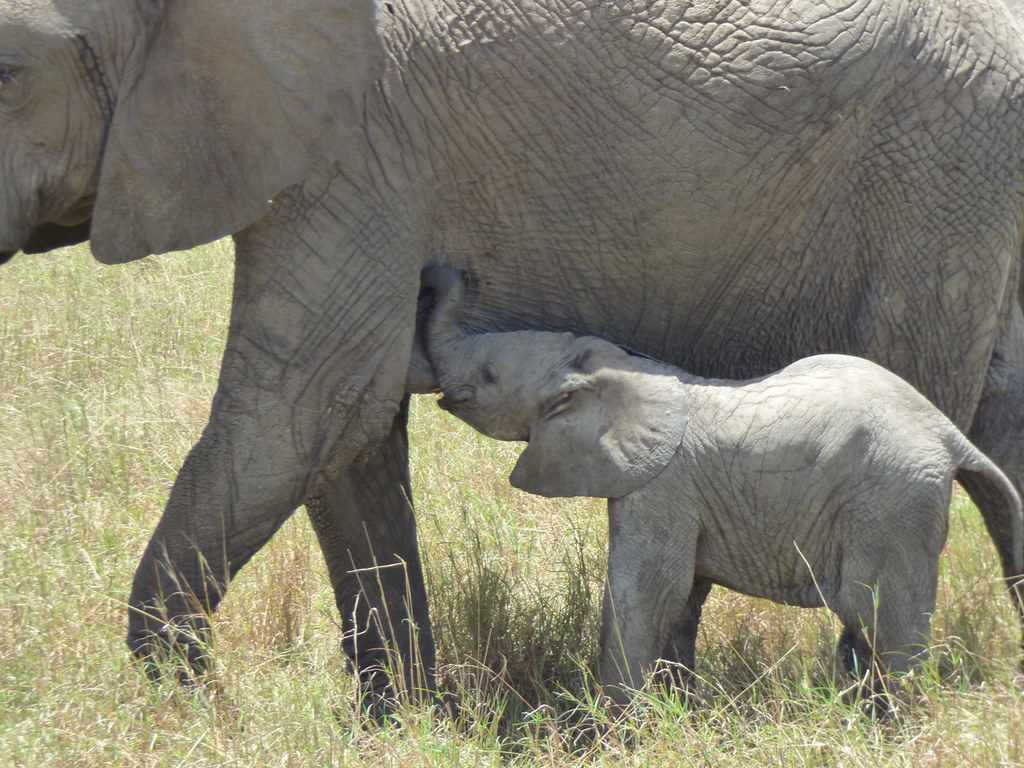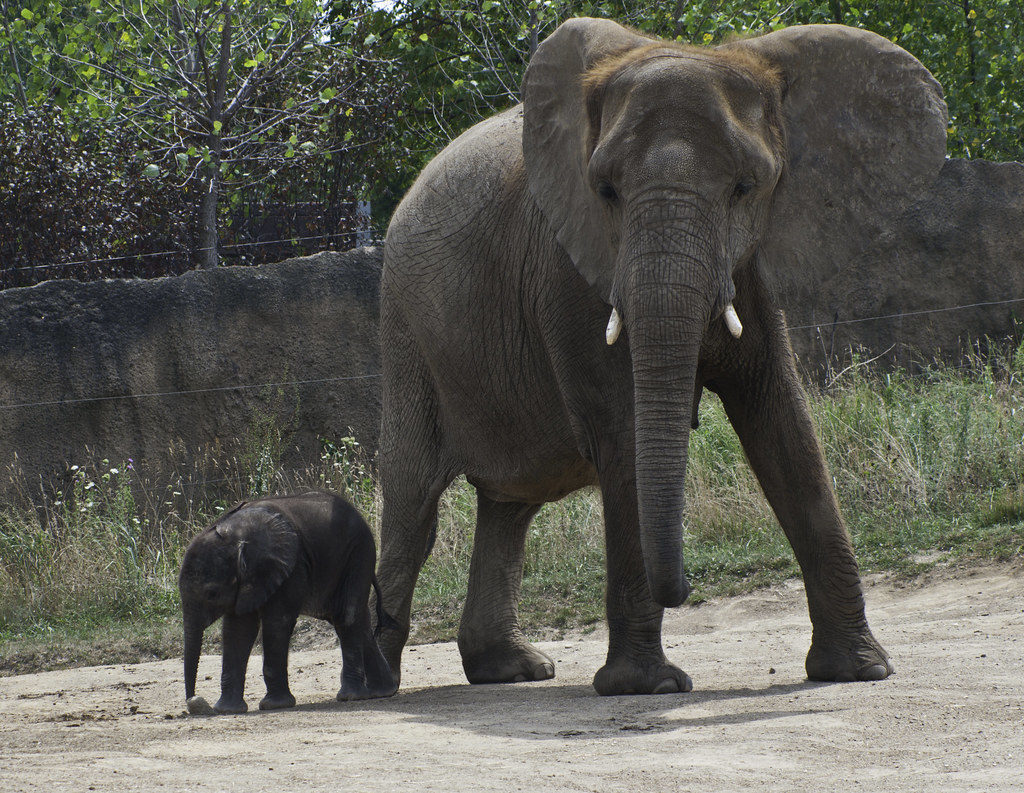United States zoos now plan to import baby elephants from Zimbabwe, undeterred by the international uproar over their 2016 import of 18 wild elephants from Swaziland.
The US Association of Zoos and Aquariums (AZA) media liaison, Rob Vernon, has confirmed “knowledge of a possible (elephant) import by AZA members and others,” but denied knowledge of which facilities are involved. Unconfirmed reports from a reputable Zimbabwean source state that San Diego Zoo is likely to be one of the importers.
Vernon did not reply to queries regarding whether the AZA endorsed the import of wild-caught elephants.
This import is despite ongoing international campaigns against Zimbabwe’s wild-caught elephant trade and international condemnation for the 2016 US purchase of 18 wild elephants from Eswatini (Swaziland) by AZA accredited zoos.
Of the “Swazi 18” sold to Omaha’s Henry Doorly Zoo, Wichita’s Sedgwick County Zoo and Dallas Zoo, two have died (one during preparation for the export) and two were re-sold – despite promises to keep families together, which is vital to the elephants’ physical and emotional welfare.

Adding to this, in violation to CITES (Convention on International Trade in Endangered Species) regulations and International Air Transport Association (IATA) transport guidelines, one of the exported elephants was pregnant.
“It is unconscionable that US zoos would continue to play a part in perpetuating the cruel trade in live elephants. This seriously undermines any claim by zoos to care about animal welfare or the conservation of African elephants,” says Catherine Doyle, Director at the Performing Animal Welfare Society (PAWS).
US captive elephant populations are declining, necessitating the continued import of wild-caught elephants to keep elephant exhibits open. In AZA accredited zoos alone, 76 elephants, 24 of which were under the age of 2, have died since 2000. There is an estimated death rate of 54% of captive-born calves. Roughly 305 elephants are currently being held at 62 AZA accredited zoos in the US.
Meanwhile, 37 wild-caught juvenile elephants are currently incarcerated near Zimbabwe’s Hwange National Park, pending a stalled export to zoos in China and Pakistan.
This is in addition to the approximately 125 baby elephants Zimbabwe has sold to Asia since 2012, despite ongoing international resistance and objections by animal welfare organisations worldwide, including the Zimbabwe Society for the Prevention of Cruelty to Animals (ZNSPCA), who state that the cruel exports have no conservation value to Zimbabwe’s elephant populations.
Over 2.5 million US dollars have been made from elephant sales so far. There is no evidence that this money has benefitted wildlife conservation.
Chairman of the ZNSPCA Ed Lanca said, “There is no sound basis for the removal of wild-caught baby elephants to facilities that are neither equipped or prepared to provide adequate long-term care for these animals.”
According to CITES Appendix II listing, under which Zimbabwe’s elephants are listed, trade in live elephants is allowed only “to appropriate and acceptable destinations” that “promote in situ conservation.”
But research by elephant experts confirm that zoos are unable to provide for the physical and emotional welfare of elephants, and high mortality rates and ineffective breeding of captive elephants undermines conservation efforts.
“Zoos, as they currently exist, are not suitably equipped to house and care for, and should not be considered appropriate and acceptable destinations for, live, wild-sourced African elephants,” says a CITES report on international trade in live and wild-caught African elephants, by Keith Lindsey of the Amboseli Trust for Elephants and Iris Ho of Humane Society International.

The International Union for Conservation of Nature (IUCN) African Elephant Specialist Group said in 2003: “Believing there to be no direct benefit for in situ conservation of African elephants, the African Elephant Specialist Group of the IUCN Species Survival Commission does not endorse the removal of African elephants from the wild for any captive use.”
CITES regulations also state that elephant exports must “not be detrimental to the survival of the species” and the animals must be “legally obtained.”
Zimbabwean NGO The People and Earth Solidarity Law Network (PESLawyers) says that the elephant trade permits are illegal, in contravention to national law and CITES regulations, since due process and public participation has been ignored. An interdict to halt the export of the 37 elephants has been launched by PESLawyers in Harare.
“CITES regulations are being broken with no regard and no address to the flouting of terms by both Zimbabwe and China. National Laws [of]Zimbabwe’s Wildlife Act are clear and the capture and export of wildlife has to meet a specific criteria, the current crisis [of]“snatch and go” [of wild baby elephants]with neither transparency nor accountability is unlawful,” says a letter addressed to the European Parliament from wildlife activist, Sharon Hoole, requesting CITES to investigate unlawful permitting.
Brett Mitchell of the Elephant Reintegration Trust says that without a well-planned and costly reintegration program, “the likelihood of these calves surviving on their own (in the wild) or finding their family groups again is extremely low and they’re unlikely to be accepted into another wild herd.”
At the upcoming CITES 18th meeting of the Conference of the Parties (COP 18) in August, Zimbabwe, Botswana, Namibia and South Africa are proposing that their elephants remain listed as Appendix II (which allows trade in hunting trophies, animal products, ivory and live animals), but with a removal of the current restrictions limiting ivory trade. This means that while elephants in all other African range states remain on Appendix I, which does not allow the trade of ivory and live elephants “for primarily commercial purposes,” these countries are requesting unrestricted trade in elephants.
Featured image: baby elephants at the Lowry Park Zoo in Florida. These specific elephants are not related to the elephants from Zimbabwe in this story. Image credit Eric Kilby, CC BY-SA 2.0.





